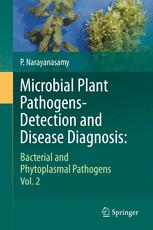

Most ebook files are in PDF format, so you can easily read them using various software such as Foxit Reader or directly on the Google Chrome browser.
Some ebook files are released by publishers in other formats such as .awz, .mobi, .epub, .fb2, etc. You may need to install specific software to read these formats on mobile/PC, such as Calibre.
Please read the tutorial at this link: https://ebookbell.com/faq
We offer FREE conversion to the popular formats you request; however, this may take some time. Therefore, right after payment, please email us, and we will try to provide the service as quickly as possible.
For some exceptional file formats or broken links (if any), please refrain from opening any disputes. Instead, email us first, and we will try to assist within a maximum of 6 hours.
EbookBell Team

4.8
74 reviewsThe bacterial and wall-less phytoplasamal pathogens are comparatively much smaller than fungal pathogens. The morphological characteristics of bacterial pathogens have limited application for their detection and identification. Hence, cultural, biochemical and physiological characteristics have to be determined for the detection and identification of bacteria up to generic/species level. Immunoassays have been shown to be highly efficient for detection, identification and differentiation of isolates, strains and/ or pathovars of bacterial species. Application of various nucleic acid-based techniques based on hybridization of probes with complementary sequences of target bacterial pathogen DNA and / or amplification of unique sequences of the target bacterial species has been demonstrated to yield reliable and reproducible results rapidly. The nonculturable phytoplasmas have to be detected in plants, planting materials and the vectors involved in the transmission of these disease-causing agents from plant to plant. They have been identified and classified primarily based on the techniques based on the genomic nucleic acid characteristics. The comprehensive information presented in this volume, following extensive literature search is aimed to provide all that is required by the researchers, teachers and students of various disciplines of biological sciences, in addition to the extension pathologists, and personnel of plant quarantines and certification programs. The inclusion of a wide range of protocols is the unique feature of this volume enabling the scientists to choose the methods for their investigations.